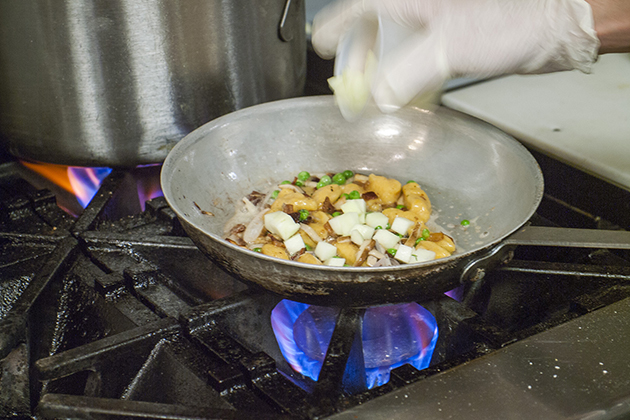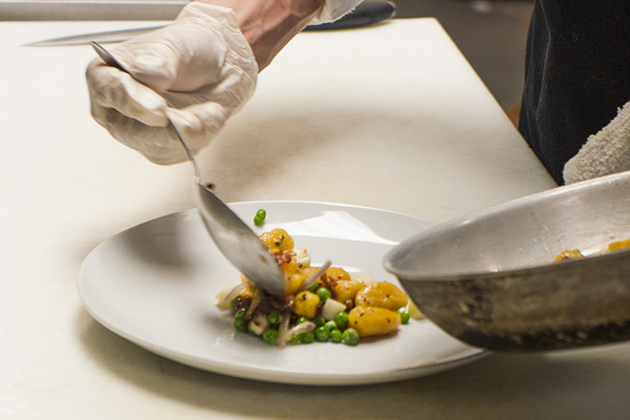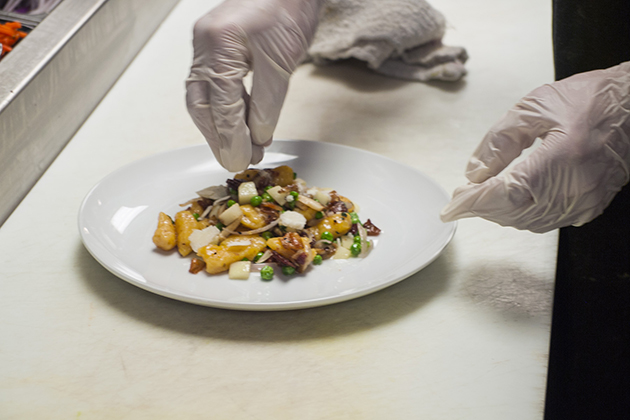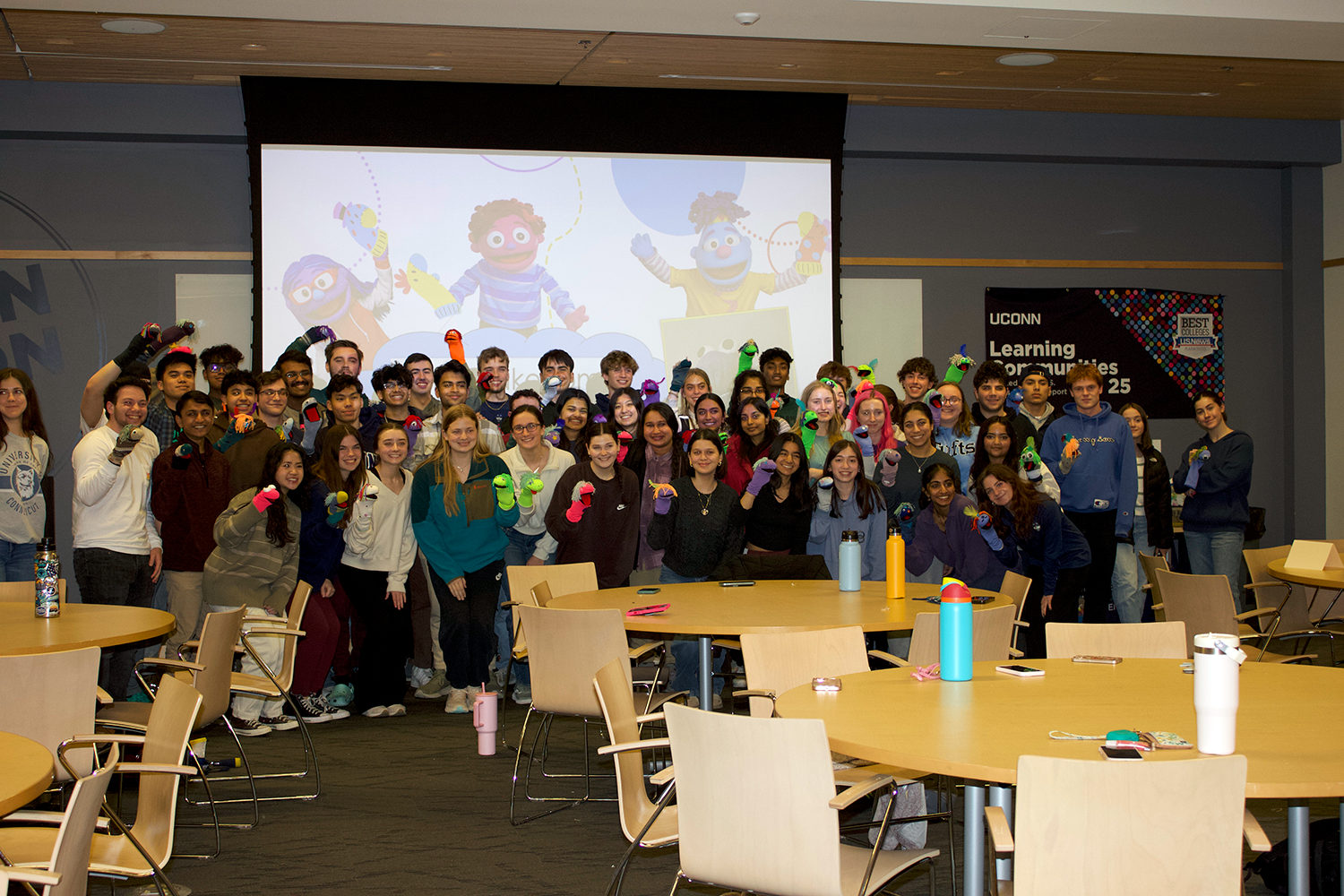For Chuck and Augie’s chef Kyle Davis, creating a menu starring local produce is nothing short of routine. After all, roughly one-third of the ingredients used by UConn Dining Services are local, a figure that is increasing each year.
“We pride ourselves on using as much local produce as possible,” says culinary development manager Rob Landolphi. “We are the largest user of Connecticut-grown produce.”
Tapping into local produce has proved to be a winning recipe for UConn Dining Services. Later this week, UConn will accept the gold award for one of Davis’s recipes – sweet potato gnocchi – in the National Association of College and University Food Services’ local foods competition at the association’s annual conference in Indianapolis. The University will also receive a silver medal for best retail concept for 1 Plate, 2 Plate, a fast-food alternative using locally grown produce that debuted in the Student Union Food Court in 2014.
We pride ourselves on using as much local produce as possible.– Rob Landolphi
The gnocchi recipe was among a menu of soups, salads, sandwiches, entrees, desserts and beverages made with local produce and ingredients specially created for Farm to Chef Week, a statewide event for which participating restaurants create menus with at least four items showcasing Connecticut-grown ingredients.
Farm to Chef Week is one of many ways UConn Dining Services participates in and promotes greater reliance on local food. Another is its Local Routes program, which seeks to educate the community about the importance of using local food, supporting the local economy and protecting the environment.
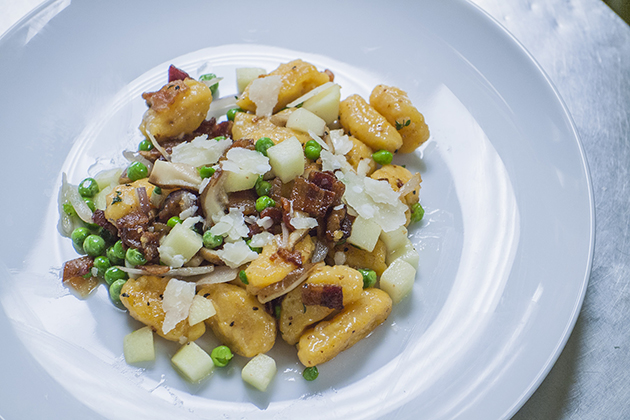
The winning sweet potato gnocchi dish used ingredients from three Connecticut farms: sweet potatoes, russet potatoes, mushrooms, peas, thyme, and shallots from UConn’s own Spring Valley Farm, bacon from Green Valley Farm in Enfield, and apples from Blue Hill Orchard in Wallingford.
While UConn has many sources for local produce, student-run Spring Valley Farm is its top provider. The farm is operated by 11 UConn students who plant, grow, harvest, and sell 45 varieties of vegetables and herbs. The students live together at the house on Spring Manor Farm Road in Storrs, an extension of the EcoHouse Learning Community. UConn Dining Services funds the farm and receives fresh produce in return.
Last year, the farm harvested 8,000 pounds of produce – enough to provide Chuck and Augie’s with an entire summer’s supply of greens. It is also the top provider for 1 Plate, 2 Plate and Whitney Dining Hall.
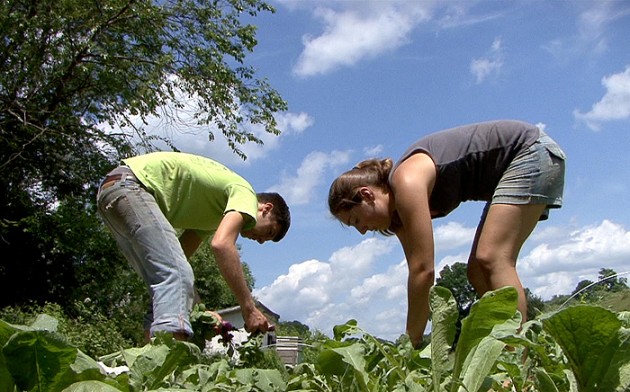
The students take their responsibilities seriously. During the growing season, they are in the fields planting, watering, weeding, and harvesting by 7 a.m., working practically nonstop until 1 or 2 p.m.
“It’s not just about providing food for us and our farm; UConn is depending on us,” says Spring Valley farmer Kaitlin O’Donnell ’16 (CLAS). “It’s a privilege that shouldn’t be taken lightly.”
Since Dining Services and Spring Valley Farm work so closely together, what Spring Valley decides to grow determines the kind of dishes on Chuck and Augie’s menu.
Unlike restaurant chefs, farmers must plan their menu far in advance. For Spring Valley, the process begins with January seed meetings to decide which crops will earn a spot in the garden come springtime. And when the crops are harvested, UConn’s chefs have plenty of opportunities to be creative.
“Each student picks one crop they want to grow, and Chuck and Augie’s has to find a way to use it,” Davis says. “We talk to the farm’s director, Julia Cartabiano, each week to see what Spring Valley has, so we can plan our menu.”
UConn’s reliance on local food brings pride not only to Landolphi, Davis, and the University’s culinary staff but to the students at Spring Valley Farm. O’Donnell says since joining the farm she’s become more mindful of the sources and varieties of produce on campus. Seeing her farm’s name at the top of the list of produce providers for 1 Plate, 2 Plate, she says, is motivating.
“When I see ‘Spring Valley’ up on the board at 1 Plate, 2 Plate, I’m like, ‘yeah!’ It’s good to see our name up there,” O’Donnell says. “We’re always excited to give produce, and UConn is excited to take it.”

